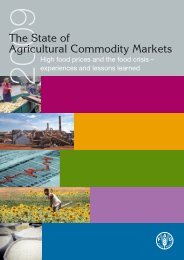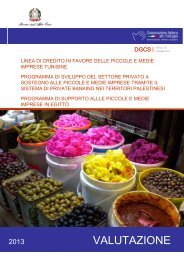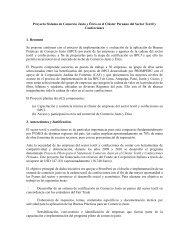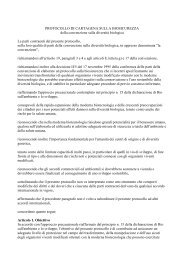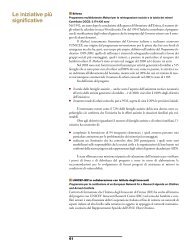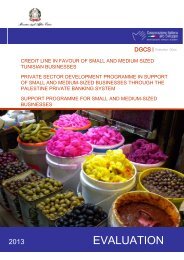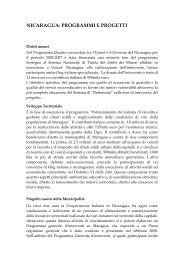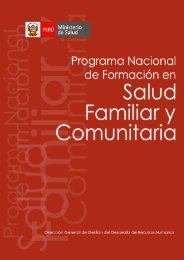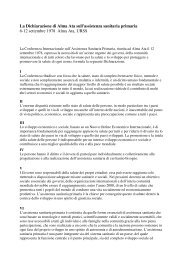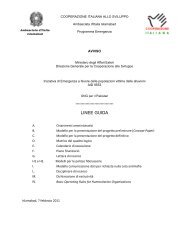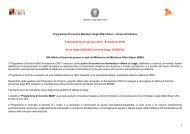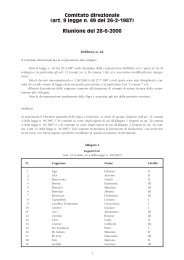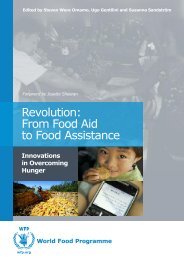FRONTESPIZIO - Cooperazione Italiana allo Sviluppo
FRONTESPIZIO - Cooperazione Italiana allo Sviluppo
FRONTESPIZIO - Cooperazione Italiana allo Sviluppo
Create successful ePaper yourself
Turn your PDF publications into a flip-book with our unique Google optimized e-Paper software.
important share of household expenditures on health. This entails that countries have the capacity toadvocate for, design, implement, monitor, and evaluate policies and practices to build sustainablehealth systems. At a time when the international community and SSA countries scale up interventionsto deal with the epidemics of tuberculosis, malaria, HIV-AIDS (GFATM and other various initiatives),5. the Human strengthening resources for ofhealth the health (HRH): workforce a crucial element calls for for immediate achieving international policy attention MDGs. and action, 59 as theworkforce situation all over the world and in Sub Saharan Africa is particularly critical:Absolute numbers are inadequate, sometimes insufficient and decreasing because of thecombined effects of brain-drain (out of the sector, out of the country) and HIV/AIDS;sometimes in excess for certain cadres, due to poor training and employment regulationtowards the private sectors’ greener pastures, gender imbalances (management,specialists).policies.• Training is still mostly based on western models (even in Ethiopia and particularlyfor medical doctors) and not consistent with the needs of the region;imbalances quality is (management, extremely specialists). variable.• Staff work in poor conditions with incomplete access to essential drugsand consumables, poorly maintained equipment, little incentives, andpoor human resource management.• Country management. capacity to address these problems is limited.There are quite a lot of challenges related to human resources. Initiatives suchas the Millennium Development Goals, debt relief ear-marked to the healthand education sector, the Global Fund or the Global Alliance for Vaccinesand Immunization (GAVI) are not merely based on the scaling-up of healthrelated interventions but need adequate human resources to implementthem. HRH will also heavily influence absorptive capacities of supplementaryresources to health systems in low- and middle income countries. Thus,for any large scale effort to rapidly increase coverage of the population, anyfair management strategy functional for attracting and retaining HRH willbe a key to success. When comparing the need of health workers with the epidemiologicalcontext of a country, Ethiopia falls among the “low-density /high-mortality” countries.There are great imbalances: more doctors than nurses in certain countries, certain areasnot covered (mental health, occupational health, public health, management), internalmigrations with urban concentration, shift towards the private sectors’ greener pastures, genderTraining is still mostly based on western models (even in Ethiopia and particularly formedical doctors) and not consistent with the needs of the region; quality is extremely variable.Staff work in poor conditions with incomplete access to essential drugs andconsumables, poorly maintained equipment, little incentives, and poor human resource



